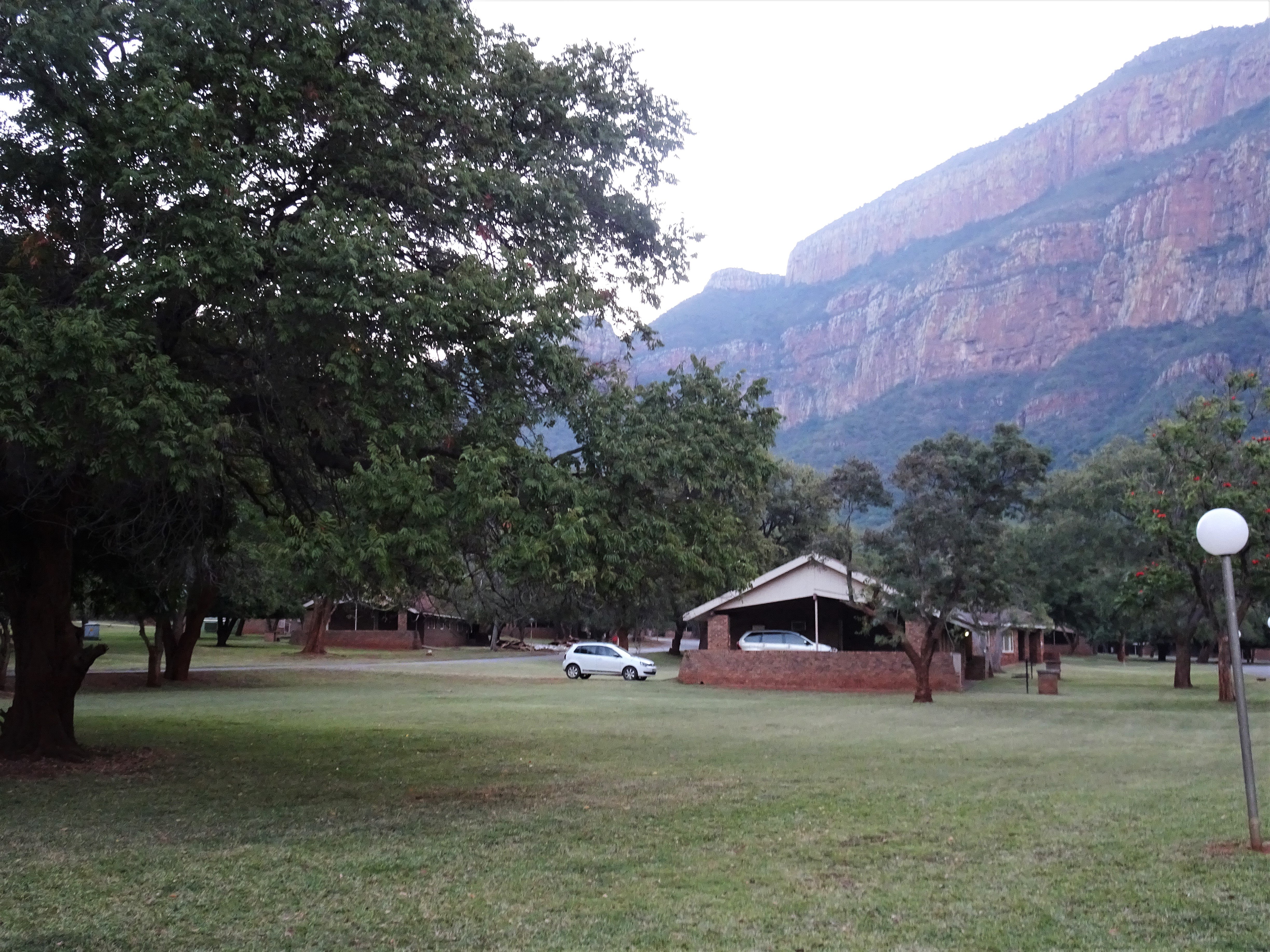Blyde River Nature Reserve
Just below Bourke’s Luck, the combined streams of the Blyde and Treur rivers (the rivers of joy and of sorrow) have carved a deep canyon stretching some 26km along the line of the escarpment, eventually reaching the Lowveld. Dammed in the upper reaches of the canyon, the river forms the central feature of a vast nature reserve, with holiday resorts and camp-sites within a short hike of rich indigenous flora. Large antelope have been re-introduced to the area which is traversed by the Blyde River Canyon Hiking Trail that starts at the well-named feature of God’s Window.
The Blyde River rises on the escarpment southwest of Graskop and flows mostly due north, past Pilgrims Rest to join the Olifants River south of the village of Mica in the Lowveld. The Treur River joins the Blyde at one of the most remarkable geological phenomena in the country, Bourke’s luck Potholes. These surreal rock carvings are the products of water erosion over the thousand of years. The name is derived from Thomas Bourke, who worked a profitable little mine at the bottom of some of these potholes. Beyond the potholes the river plunges into one of Africa’s most spectacular canyons. On both sides the galleries of sandstone cliffs rise between 600m and 800m above the river bed. These cliffs are dominated by three rondavel-shaped promontories, called the Three Sisters or Three Rondavels (not to be confused with the Three Sisters north of Beaufort West in the Great Karoo).
At the end of the gorge the road reaches Blyde River Canyon dam, holiday resort and nature reserve. The dam has a capacity of 54 millions m3 behind a wall 72m high. The 227km2 reserve that has been developed around the dam is home to a rich variety of animal and bird life, including all three turacos (or louries) found in South Africa.
There is of course a story behind the names Blyde and Treur. In 1844 Voortrekker leader Hendrik Potgieter set off on one of many exploratory journeys to make contact with the Portuguese in Lourenço Marques. On the way he left the main trek at an as yet unnamed river and proceeded on horseback with a few of his men. The day of their expected return from Mozambique came and went. A few days later, having given up all hope of Potgieter’s safe return, the men and woman left behind the camp they had struck and headed west after naming the river Treur (‘grief’ or ‘sorrow’). While fording yet another river a day or so later, they were overtaken by Potgieter and his men. Naturally, this river was immediately christened Blyde (‘joy’)

